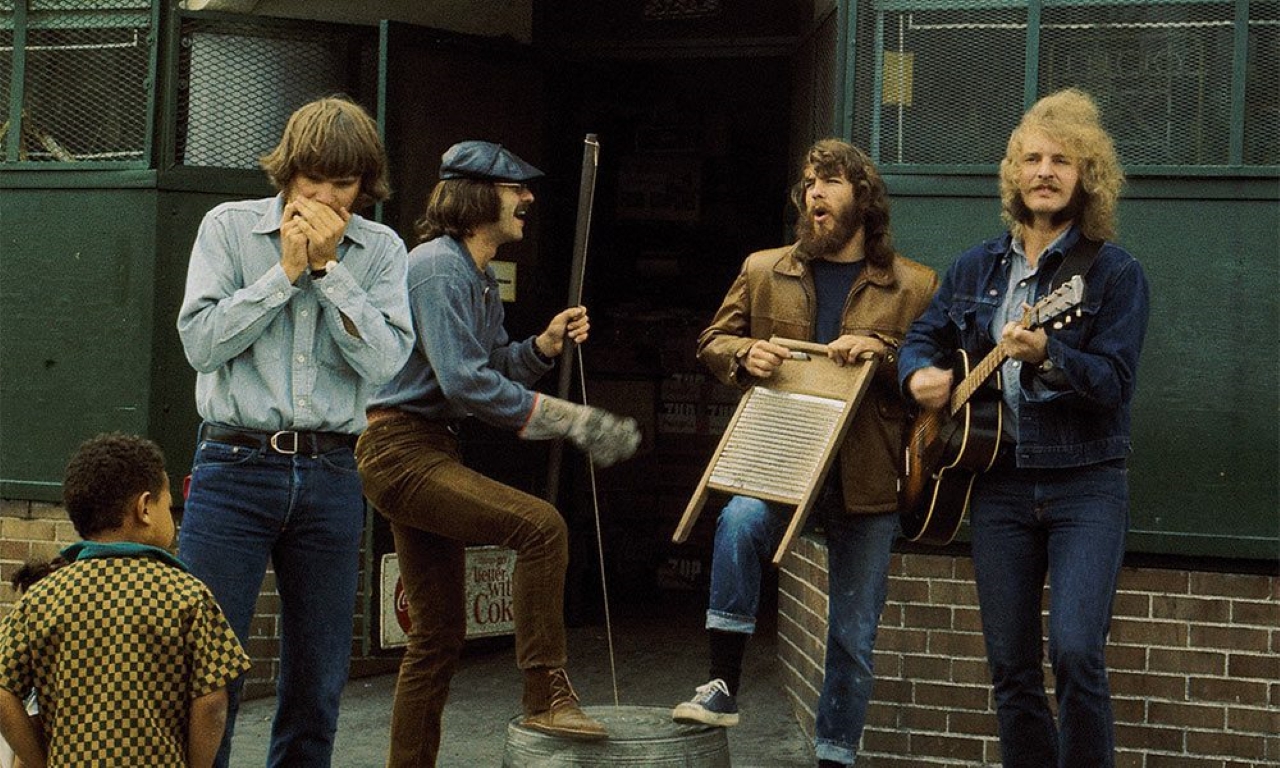🌍 From Bayou Roots to Global Fame
By 1970, Creedence Clearwater Revival had become an unstoppable force in American rock. Their swampy blend of blues, country, and Southern rock belied their California roots, giving them a gritty authenticity that set them apart from psychedelic contemporaries. While other bands were drifting into experimental soundscapes, CCR stuck to tight songwriting, driving rhythms, and John Fogerty’s unmistakable voice.
The result? Hit after hit. And with the release of Cosmo’s Factory in July 1970, they reached their absolute peak—not just in the US, but across the Atlantic, where on September 1970, the album hit No. 1 on the UK Albums Chart.

🎙️ What’s in a Name?
The title Cosmo’s Factory came from drummer Doug “Cosmo” Clifford, who jokingly called their rehearsal space in Berkeley, California, “the factory.” John Fogerty was known as a taskmaster, insisting on constant practice, almost like clocking in at a day job. That discipline, though grueling, produced some of the most enduring rock anthems of the era.
🎵 A Tracklist Packed with Classics
Unlike many albums padded with filler, Cosmo’s Factory is a greatest-hits collection in all but name. Nearly every track became iconic:
-
“Travelin’ Band” – A blistering opener inspired by Little Richard’s style.
-
“Who’ll Stop the Rain” – A haunting protest anthem that still resonates today.
-
“Up Around the Bend” – With its unforgettable guitar riff, it became an instant stadium sing-along.
-
“Run Through the Jungle” – Dark, brooding, often mistaken for a Vietnam protest song.
-
“Lookin’ Out My Back Door” – Whimsical and lighthearted, contrasting their usual grit.
-
“I Heard It Through the Grapevine” – An epic 11-minute jam version of the Motown classic.
This diversity showed CCR’s range, from joyful country-tinged rock to urgent social commentary.
📈 Chart Domination
In the US, Cosmo’s Factory sat at No. 1 on the Billboard 200 for nine consecutive weeks. In the UK, where American rock acts often struggled against homegrown giants, the album climbed to the top in September 1970.
This was a breakthrough moment: while critics debated whether CCR could match the “serious” artistry of British bands, fans voted with their wallets. The swamp rockers from California had officially gone global.
🔥 A Band at Its Peak—and Breaking Point
Ironically, just as CCR achieved worldwide dominance, tensions within the band were rising. John Fogerty’s perfectionism and control over the group’s creative output created friction. Tom Fogerty, John’s older brother and rhythm guitarist, felt increasingly sidelined. Within two years, the cracks would widen, leading to Tom’s departure in 1971 and the eventual collapse of the band by 1972.
But in 1970, none of that showed. To the world, CCR looked unstoppable. They outsold even The Beatles that year, proving themselves the most commercially successful rock band on the planet.
🕰️ Why “Cosmo’s Factory” Still Matters
Decades later, Cosmo’s Factory is hailed as CCR’s masterpiece, the album that captured both their roots and their reach. Few bands could balance lighthearted fun (“Lookin’ Out My Back Door”) with searing social commentary (“Who’ll Stop the Rain”) in one record—and make it all sound so effortless.
It’s not just an artifact of its time; it’s a blueprint for timeless rock songwriting.